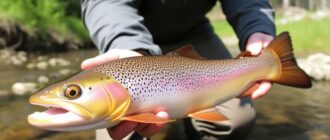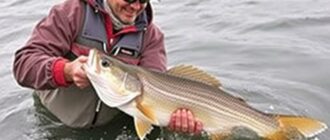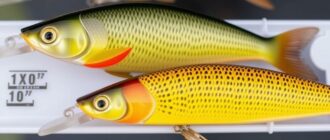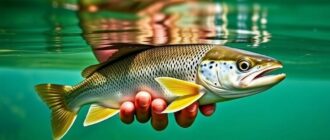Night eel fishing — or Nachtangeln auf Aal — has a romantic, slightly mysterious reputation among anglers. There’s something elemental about standing on a riverbank as the world darkens, feeling the slight tug on a rod, and knowing that somewhere below the surface a secretive, slippery creature is moving through the gloom. Whether you’re an experienced angler who wants to sharpen your night tactics or someone looking to try something new, this guide will take you through every step. We’ll cover the biology of eel behavior, essential equipment, bait recipes, rig setups, safety tips, legal considerations, and plenty of practical tricks to increase your catch rate.
Throughout this article I’ll keep things simple and conversational, but also detailed enough to be immediately useful on the bank. Expect clear explanations, realistic setups, and honest advice about what works and why. Night eel fishing is accessible and rewarding, but success depends on preparation and patience. So pour a hot drink, get comfortable, and let’s explore the quiet art of catching eels at night.
Why Nachtangeln auf Aal? The Appeal of Night Eel Fishing
Eels are primarily nocturnal feeders. That’s the first reason night fishing is so effective. As daylight fades, eels move from sheltered daytime spots into feeding zones along margins, drains, and weedy bays. This nocturnal rhythm creates predictable opportunities for anglers who understand where and when to place baits.
But beyond effectiveness, night eel fishing offers an experience unique in angling: solitude, atmosphere, and a heightened connection to the water. Sounds are magnified, every ripple looks meaningful, and a clean bite can feel like a small victory against the quiet. For many anglers, those subtle pleasures are as important as the fish themselves.
This activity also teaches valuable skills: reading water in low light, preparing durable rigs, and learning to interpret subtle signals. These transferrable skills will improve your general angling and give you confidence when fishing other species at dusk and night.
Understanding Eel Biology and Behavior
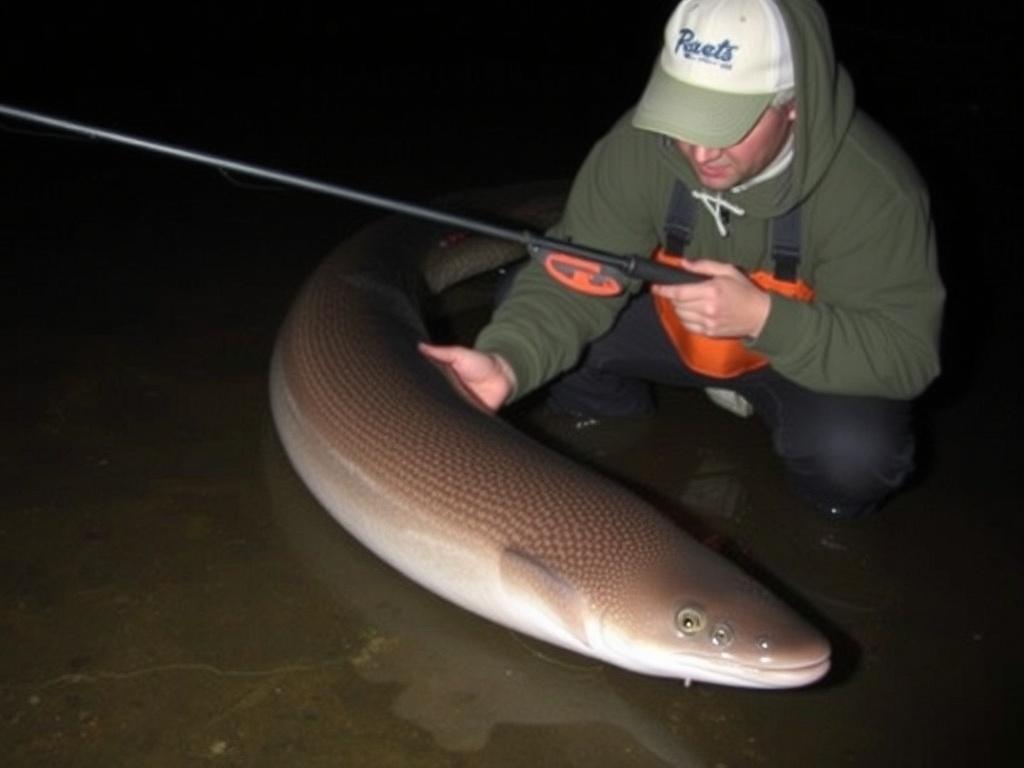
To catch eels consistently, you’ll benefit from a little biology. Eels (Anguilla species in Europe) have fascinating life cycles and behaviors that influence how they respond to bait and environment.
European eels are catadromous: they live in freshwater or brackish water but migrate to the sea to spawn. Their bodies are long, flexible, and designed for moving through narrow spaces and crevices. Eels are primarily nocturnal predators; they use their well-developed sense of smell and lateral line to detect prey in low visibility conditions. This sensory makeup clues you into why certain baits, scents, and rigs work better at night.
Eels also have preferred habitats: soft silt, holes under marginal vegetation, areas with submerged structures, broken banks, drains, and weedy drop-offs are prime holding areas. They often lurk near the bottom and make short, quick strikes on passing food. Recognizing these habits will shape where you fish and how you present bait.
Daily and Seasonal Patterns
Night feeding is strongest between dusk and the early hours, but the exact timing shifts with seasons and moon phases. In summer, warm water means more active eels for longer periods at night. During cooler months, feeding windows tighten and the fish might be more lethargic. Moonlight affects behavior too: bright full-moon nights can alter eel movement, sometimes making them more cautious or moving them into deeper water. Pay attention to these rhythms and adapt your sessions.
Diet and Preferred Prey
In the wild, eels feed on a wide variety of prey: fish, crustaceans, worms, and insect larvae. This opportunistic diet suggests that a range of baits can work well — natural baits like ragworms, bloodworms, small fish, and cut bait, as well as scent-rich artificial baits. Because eels rely heavily on smell, bait scent and presentation can be decisive.
Essential Gear for Nachtangeln auf Aal
Night eel fishing calls for specific gear choices that balance sensitivity, strength, durability, and stealth. You don’t need a massive amount of equipment, but what you bring should be reliable and suited to low-light conditions.
Rods
For most eel fishing, a medium-light to medium-power rod between 7 and 12 feet is ideal. Shorter rods (7–9 feet) offer better control when fishing tight spots or undercut banks, while longer rods help with reach and making smooth long drifts or longlands. The action should be forgiving but responsive: a parabolic action rod that absorbs the eel’s powerful, twisting fights will reduce hook pulls and shore leash incidents.
Reels and Line
Spinning reels in the 2000–4000 size category are adequate for most eel work. Choose a reel with a smooth drag; eels can make sudden runs and long, winding escapes. For lines, braided mainline (10–20 lb test equivalent) is often favored because it offers sensitivity and low stretch, helping you feel the bite at night. However, braided line is visible in clear water, so you might prefer a fluorocarbon or monofilament mainline (8–15 lb) in highly pressured or clear conditions. Use a fluorocarbon leader (10–20 lb) as it is less visible and abrasion-resistant.
Hooks and Terminal Tackle
Eel mouths are surprisingly soft, so choose strong hooks with a fine point that can sink easily but hold reliably. In many cases, short-shank wide-gape hooks in sizes 2 to 4/0 work well, depending on bait size. Use black nickel or chemically sharpened hooks for a good balance of stealth and penetration. Swivels, clips, and beads help create rigs that withstand abrasion and tangle less. For leaders, 30–60 cm of 15–25 lb fluorocarbon is a practical baseline.
Bait Containers and Light Sources
Night sessions require practical organization. Keep baits in separate, labeled containers to preserve scent and ease access. A small headlamp with red-light mode is essential: red light offers enough illumination without spooking fish and helps preserve night vision. A powerful torch for casting paths and safety is also wise. Consider waterproof storage for rigs and spare lines.
Additional Practical Gear
Bring a reliable landing net with fine mesh to avoid damaging the eel’s skin. Eels are slippery and can easily escape a poor net. Pliers or forceps are needed to remove hooks safely. A small mat or damp cloth is useful if you practice catch-and-release, as eels have delicate skin that should not dry out. Don’t forget warm clothing, a folding chair, a thermos, and safety items like a whistle and a mobile phone in a dry bag.
Essential Rig Setups for Night Eel Fishing
Simplicity wins at night. Complex rigs tangle more easily and are harder to manage in the dark. Below are dependable rigs that every night eel angler should know — each with explanations about when and why to use them.
Ledger Rig (Simple Bottom Rig)
The ledger rig is the workhorse of eel fishing and is effective when eels feed on or near the bottom. It consists of a lead (egg sinker or inline lead), a swivel, a short leader, and a hook with bait. Keep the leader short (20–40 cm) to reduce tangling and present a tidy profile.
- When to use: calmly flowing rivers, channels, or marginal holds where eels feed close to the bottom.
- Pros: Stable presentation, easy to bait up, simple to set and change.
- Cons: Less natural movement for large baits; can snare on snags in heavy structure.
Float-Fished Rig (Subtle Presentation)
Float rigs present bait off the bottom and are excellent when eels are active but holding above the bottom or when vegetation makes bottom fishing problematic. Use a fixed or waggler float, an adjustable shotting pattern, and a leader of 30–80 cm depending on water clarity and depth.
- When to use: shallow margins, weedy bays, and when you want to keep bait visible above weed or silt.
- Pros: Avoids snagging, more visible bites, bait can move naturally with the current.
- Cons: Requires more attention and possibly more skill to detect subtle takes at night.
Drop-Back and Hair Rigs
For bait like pieces of fish or large worm bundles, a simple drop-back or hair rig (borrowed from carp fishing but adjusted) can work. The hair allows the eel to pick the bait and rotate without the hook interfering with the bait weight, improving hook hold.
- When to use: larger, chunkier baits such as small baitfish pieces or large whole worms.
- Pros: Improved hooking efficiency, natural bait movement.
- Cons: Slightly more complex to tie and manage in the dark.
Free-Lined Baits
A free-line setup uses little or no weight, letting the bait drift naturally with current. This is effective on calm nights with slow-moving water where a subtle presentation is crucial.
- When to use: slow water margins, under banks or when eels are feeding on surface or midwater prey.
- Pros: Natural presentation, especially for livebaits; minimal gear to tangle.
- Cons: Harder to cast, control, and detect bites; not suited to flowing conditions.
Bait Choices and Preparation
Because eels are opportunistic and smell-driven, bait choice is wide. Successful night eel anglers often rely on a mix of fresh natural baits, preserved baits with added scent, and sometimes commercially scented baits. Preparing bait well and storing it properly can be as important as the bait choice itself.
Natural Baits That Work
- Ragworms and bloodworms — classic eel baits. Their smell and wiggle make them irresistible. Keep them fresh and cool.
- Small fish — whole small fish or large cut baits (mackerel, herring, sardines). Oily fish work very well because they release oils and scents in water.
- Fresh shrimp or prawns — excellent in brackish or coastal waters.
- Worm blends — garden worms or nightcrawlers can be effective, particularly in freshwater rivers.
Use bait that is fresh and pliant. For cut baits, use chunks that have some weight but still move or disperse scent. For worms, consider threading multiple worms together to create an attractive “worm bundle.”
Prepared and Commercial Baits
There are many eel-targeted baits on the market — pastes, boilies adapted for predators, and scent-drenched baits. These can be convenient and long-lasting; however, they often work best when combined with natural attractors like oil or fish oil. Consider them supplementary to fresh natural baits rather than replacements.
Make Your Own Scent Enhancers
An inexpensive and powerful trick is to enhance your bait with scents. Use fish oils, shrimp paste, or even a dash of aniseed (sparingly) to increase detectability. A simple recipe: mix fish oil, ground bait crumb, and a touch of garlic oil to create a sticky paste that adheres to cut baits or can be wrapped around a hook. Store in a small sealed container.
Storing and Preparing Bait for Night Sessions
Maintain bait freshness by keeping it chilled in a cooler with ice packs. Avoid direct contact between freshwater and your bait containers to prevent dilution. Bait that dries out or becomes slimy will lose attraction and handle poorly on the hook. Label containers for fast access in low light: for example, use glow-in-the-dark stickers or rubber bands of different colors to identify bait types without turning on a bright light.
Finding the Right Spots at Night
Location matters enormously. Some of the best eel spots are obvious after you know what to look for, but at night they can be easy to miss. Here’s how to read the bank and find places likely to hold eels.
Marginal Structures and Cover
Eels love cover. Look for submerged logs, fallen trees, weed edges, reed beds, and undercut banks. These structures provide shelter during the day and ambush spots at night. In rivers, focus on slack water below fast runs, behind large rocks, and near silt pockets where food accumulates. In canals and drains, eels often sit near outflow structures and deeper holes.
Depth and Slope
Gentle slopes that transition from shallow margins to deeper water are prime feeding grounds. Eels will patrol these edges. Steeper drop-offs can also be productive, especially if they border weedbeds. Check depth changes with a marker float during daylight visits or by observing how water moves around obstructions.
Water Clarity and Flow
Eels are less wary in stained or dark water, which can expand the range of effective spots. Slight current helps carry scent and dislodge prey — it’s often better to fish where there is a steady, gentle flow that brings food. Too strong a current can make it hard for eels to hold and for you to present bait naturally.
Interactions with Tides and Drains (for Coastal/Estuarine Areas)
In estuaries and tidal rivers, tide movement is a prime driver of eel activity. Incoming tides bring food and push eels into marginal feeding areas. Focus on the tidal change: periods of rising tide and slack water just before or after the turn are often productive. Also monitor drainage channels and sluices where opportunistic feeding occurs.
Timing Your Night Session
Successful night eel fishing is often about timing. Choosing the right moments to be on the bank, aligning with eel feeding habits, and avoiding periods when fish are inactive will help you maximize results.
Dusk and Early Night: Prime Time
The hour after sunset through the first several hours of the night is usually the most productive. Eels move from daytime lie-ups to feeding zones as light diminishes. This window often sees the most confidence in feeding — you’ll notice more confident, solid takes.
Late Night and Pre-Dawn
There’s a second wave of activity in the pre-dawn hours, as cautious eels move again before daylight. These early morning bites can be large but more careful. If you’re prepared to stay out late, the payoff can be worthwhile.
Moon Phase and Weather Considerations
Meteorological variables affect eel behavior. Overcast nights can be better than bright full-moon conditions because cloud cover maintains low-light conditions and encourages eels to roam. Conversely, after a period of heavy rain, increased water flow and cloudiness can activate eel feeding. Avoid fishing on very bright, still nights unless you adapt rigs and baits for spooky fish.
Night Fishing Techniques and Bite Detection
Detecting eel bites at night requires sensitivity and attention because bites can be subtle. The right techniques and cues will help you avoid missed opportunities.
Visual and Audible Indicators
Use a small, muted bell on your rod or a vibration bite alarm to alert you to activity. However, be careful: bells and alarms can also spook fish if they rattle too loudly or are poorly placed. A simple vibration-style alarm or a soft, well-positioned bell tends to be best for eel fishing.
Watch your rod tip for small twitches or continuous low pressure. Eels often nip and then retreat, so a steady low roll on the line or a subtle pull is common before a stronger take. At night, your other senses become important: the sound of line stripping off the reel or the feeling through the arm can be the giveaway you need.
Playing the Fish
When you hook an eel, expect contortions and slithering runs that can head for snags. Keep a steady backward pressure; don’t try to muscle the fish in with short, hard pulls. Use the rod’s bend and the drag to wear the eel down slowly. If the eel tries to wrap around roots or undercut banks, gentle lateral movement combined with steady pressure will help free it.
Landing Eels Safely
Landing is tricky. Eels are slippery and can escape if not handled correctly. Use a deep, soft-meshed net and, if possible, slide the eel directly from the water onto a damp mat. Never leave an eel unattended on dry surfaces; their skin and slime coat must remain moist. To remove hooks, use long-nosed pliers and support the body — eels often thrash at this stage, so a firm but gentle grip behind the head helps.
Conservation, Handling, and Legal Considerations
Before you fish, check local regulations. Eel populations have been under pressure in many regions, and rules on size limits, closed seasons, and permitted methods can vary. Respect these rules. Conserving local stocks ensures the tradition of Nachtangeln auf Aal can continue.
Catch-and-Release Practices
If you’re practicing catch-and-release, keep handling to a minimum. Use barbless hooks or crush the barb slightly to make releases easier. Keep eels in the water while removing hooks whenever possible, and revive them facing upstream in slow current until they swim away. Avoid lifting them high above the ground; a low, damp mat is best for quick photos and measurements.
Dealing with Protected Areas and Species
Some waters may have restrictions to protect migrating eels or sanctuary areas. Always check fishery notices, ask local tackle shops, or consult angling federations for up-to-date information. Breaking rules can carry fines and damage sensitive populations.
Common Mistakes and How to Avoid Them
Even experienced anglers make mistakes on the bank. Here are the most common errors in night eel fishing and how to avoid them.
Using Too Bright a Light
Flooding your bank with bright white light can spook fish and reduce your night vision. Use low-intensity, red-light headlamps for rigging and a more powerful torch only for safety or when absolutely necessary. Keep light use deliberate and minimal.
Overcomplicating Rigs
Complex rigs tangle and slow you down at night. Keep rigs basic, with minimal inline swivels and only the necessary weight. Practice tying your favorite rigs in daylight until you can do them reliably by feel in the dark.
Ignoring Safety
Nights on the bank can be physically risky. Poor footing, slippery banks, and darkness increase danger. Use a torch to check your surroundings, keep a mobile phone in a dry bag, tell someone where you’re going, and wear sensible footwear. A life jacket is a sensible precaution if fishing from a small boat or near deep water.
Advanced Tips and Tricks for Experienced Anglers
If you’ve fished for eels a few times and want to push your success rate further, here are several advanced tactics worth experimenting with.
Scent Trails and Groundbaiting
Creating a smell trail to your spot can be very effective. Use small handfuls of fish-based groundbait or heavily scented particles near your baited area to draw eels from a distance. Be cautious with quantity: too much groundbait in one spot can encourage non-target species or create pollution.
Using Live Baits and Chumming
Live bait such as small fish or prawns can trigger more aggressive responses. Chumming with small pieces of oily bait can help keep eels in the area. If using live baits, ensure they’re legal in your region and consider the ethics of using live animals.
Sensitive Bite Indicators
Try tactile bite indicators like braided line through a rod tip with a small bobbin or a lightweight quiver tip designed for low-light sensation. Some anglers modify their rod tips with glow paint for better visibility without switching to full white light.
Working the Margins with a Lighter Touch
Sometimes the best approach is to fan-cast along the margin slowly, moving the bait small distances to imitate natural prey movement. This tactic increases the chances of intercepting wandering eels and can provoke strikes on otherwise shy fish.
Sample Night Eel Fishing Setups (Tables)
Below are practical, ready-to-fish setup examples. Use these as baseline configurations and adapt to local conditions.
| Setup | Rod & Reel | Line/Leader | Rig | Bait | Best Conditions |
|---|---|---|---|---|---|
| Simple Ledger | 8 ft medium rod, 3000 reel | 12 lb mono / 20 lb fluorocarbon leader (30 cm) | Inline lead (40 g), swivel, short leader, size 2/0 hook | Whole ragworm or chunk of mackerel | Slow river runs, slightly stained water |
| Float Presentation | 9 ft light rod, 2500 reel | 10 lb braid / 12 lb fluorocarbon leader (50 cm) | Waggler float, spread shot, size 1 hook | Live shrimp or prawn | Weedy bays, margins with weedbeds |
| Coastal/Estuary | 10–11 ft medium rod, 4000 reel | 20 lb braid / 30 lb fluorocarbon leader (50–80 cm) | Breakaway lead, trace with heavy swivel, size 3/0 hook | Whole sandeel or small herring | Incoming tide, rocky margins and drains |
| Stealth Free-Line | 7 ft short rod, 2000 reel | 10 lb mono / 15 lb fluorocarbon leader (30 cm) | Minimal weight, small bead, size 1/0 hook | Single large worm on hair | Calm, shallow margins with little current |
Practical Night Session Plan
Here’s a practical step-by-step plan you can follow for a typical night session. It brings together the knowledge and gear above into an actionable sequence.
- Scout the location during daylight. Note depths, structure, and potential hazards.
- Pack essential gear: rods, reels, bait, headlamp (red), net, pliers, cooler, spare hooks, and a small first-aid kit.
- Arrive before sunset and set at least two rods in different positions: one close to the margin and one targeting slightly deeper water.
- Use a simple ledger on one rod and a float presentation on the other to cover different holding zones.
- Keep a light schedule: use red headlamp for rigging, save powerful torches for emergencies only.
- Check rigs regularly, rebait as needed, and keep lines tidy to avoid tangles.
- Play hooked fish patiently, keep pressure steady, and use the net efficiently to secure slippery eels.
- If you catch nothing for a long time, move quietly to a different spot rather than staying static all night.
Common Questions and Practical Answers (FAQ)
Here are frequently asked questions about Nachtangeln auf Aal with concise, practical answers.
Is night eel fishing legal everywhere?
Regulations vary widely. Some waters have seasonal closures, size limits, or bans on certain baits or methods. Always check local rules through angling clubs, fishery managers, or online fishery notices before fishing.
What bait gets the most bites?
There’s no single best bait, but oily fish baits (mackerel, herring), ragworms, and shrimp are consistently productive. Scent and freshness matter as much as the bait type. Experiment locally to find what the eels prefer.
Can I fish for eels from a kayak or boat at night?
Yes, many anglers fish from boats or kayaks, which gives access to deeper edges and quieter spots. Use navigation lights, life jackets, and be very cautious with boat noise and rods. Kayak anglers should secure all gear to avoid losing it in the dark.
How do I avoid losing eels to snags?
Use softer, parabolic rods to absorb runs, keep steady pressure, and steer eels away from obvious snags. If the fish heads for a snag, try to change direction with slow, controlled movements rather than jerking the rod.
Ethics and Responsible Night Fishing
Being a responsible night angler means respecting fish welfare, the environment, and other users of the water. Keep noise levels low, remove all litter, avoid trampling vegetation, and follow all local rules. If you practice catch-and-release, prioritize quick handling and minimize stress. If you keep fish for food, dispatch them humanely and handle them properly for storage and consumption.
Wrapping Up: Why You Should Try Nachtangeln auf Aal
Night eel fishing combines simple gear, subtle tactics, and a deeply rewarding angling atmosphere. It’s approachable for beginners who want a new challenge and endlessly nuanced for experienced anglers seeking steady improvement. The best sessions are the result of preparation: picking the right spot, using appropriate rigs, choosing fresh bait, and adapting to conditions.
Whether you fish for sport, food, or the quiet experience of standing in the dark with a rod in hand, Nachtangeln auf Aal rewards patience and adaptability. Try a few of the setups and tactics outlined here, spend some nights learning the water, and you’ll likely discover that the quiet tug of an eel at night is one of angling’s purest pleasures.
Further Resources and Reading

If you want to go deeper, here are suggestions for where to find more information and local knowledge:
- Local angling clubs and fishery associations — best source for rules and tailored advice.
- Tackle shop conversations — staff often have up-to-date bait and product knowledge for local waters.
- Angling forums and regional Facebook groups — practical trip reports and crowd-sourced tips.
- Books on freshwater fishing and predator tactics — for technique depth and rig variations.
Quick Checklist for Your First Night Eel Session
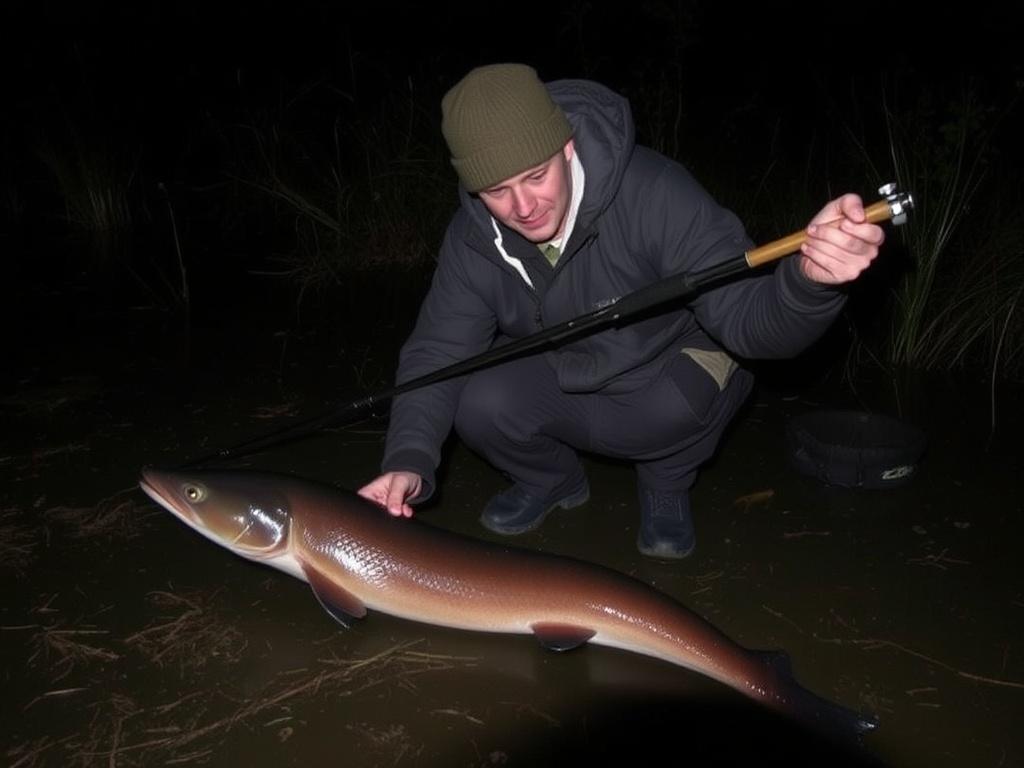
| Item | Purpose |
|---|---|
| Headlamp (red mode) | Rigging, baiting, preserving night vision |
| Spare torch | Illumination for walking or emergencies |
| Rods & reels | Main fishing gear |
| Line & leaders | Replace or adjust depending on condition |
| Hooks, swivels, leads | Terminal tackle for rigs |
| Bait cooler & containers | Preserve freshness and organize different baits |
| Landing net & damp mat | Secure and handle fish safely |
| Pliers & forceps | Hook removal and terminal adjustments |
| First-aid kit & phone | Personal safety |
| Warm clothes & thermos | Comfort during long night sessions |
Final Thoughts
Nachtangeln auf Aal is as much about the experience as the catch. It asks for patience, humility, and a willingness to learn from the water. Each night out teaches you something new — about tides, moon phases, bait handling, or simply your own patience. If you treat it with respect and a spirit of curiosity, you’ll find the rewards go well beyond a box of fish. The quiet pull in the dark, the careful fight, and the warm glow of success on a chilly night are memories few other angling experiences match.
Now that you have the essentials — gear choices, rigs, bait suggestions, spot-finding tips, and safety checks — go plan your night session. Start with a short, well-prepared outing and build your experience. Before long, you’ll learn your water’s secrets and come to appreciate one of the most compelling forms of freshwater fishing: the art and quiet thrill of Nachtangeln auf Aal.

